Food historian Marc Meltonville brewed a batch of pale ale with our Historic Foodways staff in February.
One of the great things about my job as Master of Historic Foodways at Colonial Williamsburg is making connections with other food historians and sharing information and skills with them. I was very lucky to have an opportunity to work with a fellow food and brewing historian Marc Meltonville.
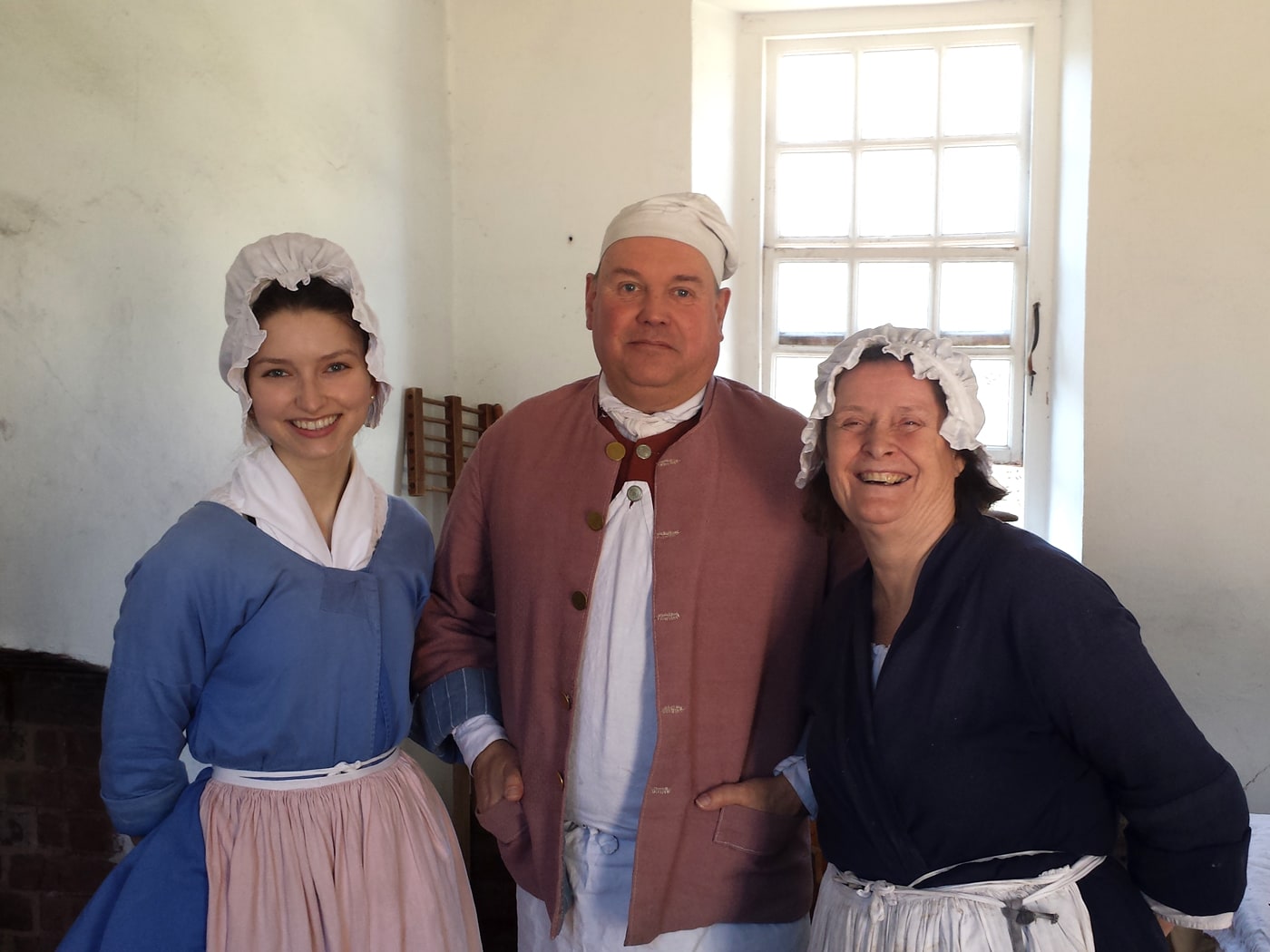
Marc, who is from England, has been researching and interpreting food history for 20 years. He has worked at the Royal Palace of Henry VIII and the Kew gardens of King George III. Recently, Marc worked on a project of recreating stone age foods and drink using the archeological evidence discovered at Stonehenge. When Marc informed me that he would be down in Williamsburg for a week to talk at the Antiques forum, I thought what a perfect time to brew a batch of beer with him.
While here in the states, Marc was also brewing over two hundred gallons of beer at a mill in Delaware, so I thought it would be fun for him to scale down to a six-gallon brew like the 18th-century Virginia housewives would have made. We decided on brewing a pale ale.
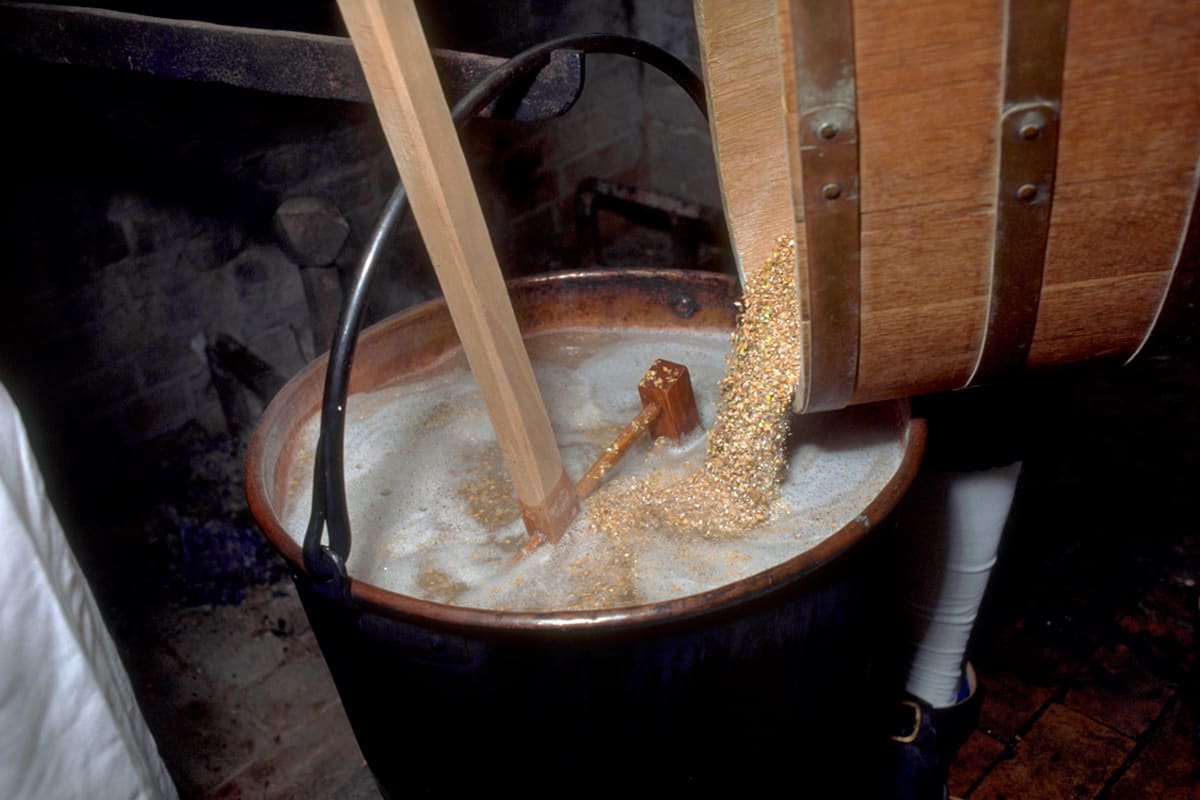
The process starts with the brewer bringing four and a half buckets of water up to a boil then running it through the wooden tubs and strainer. The mash tub is then filled with lightly crushed malted barley and the hot water is ladled over the grain and stirred with the mash rake.
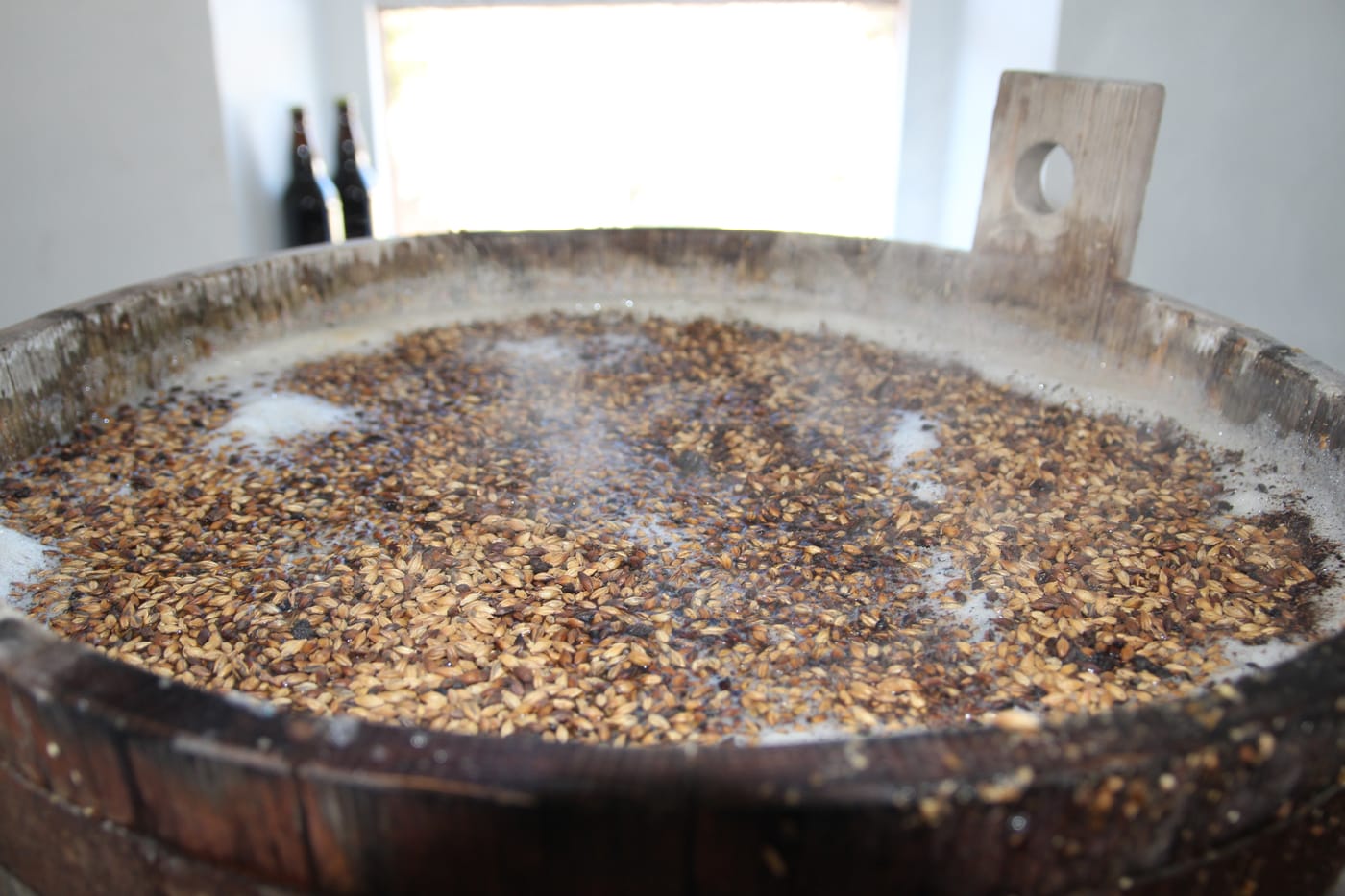
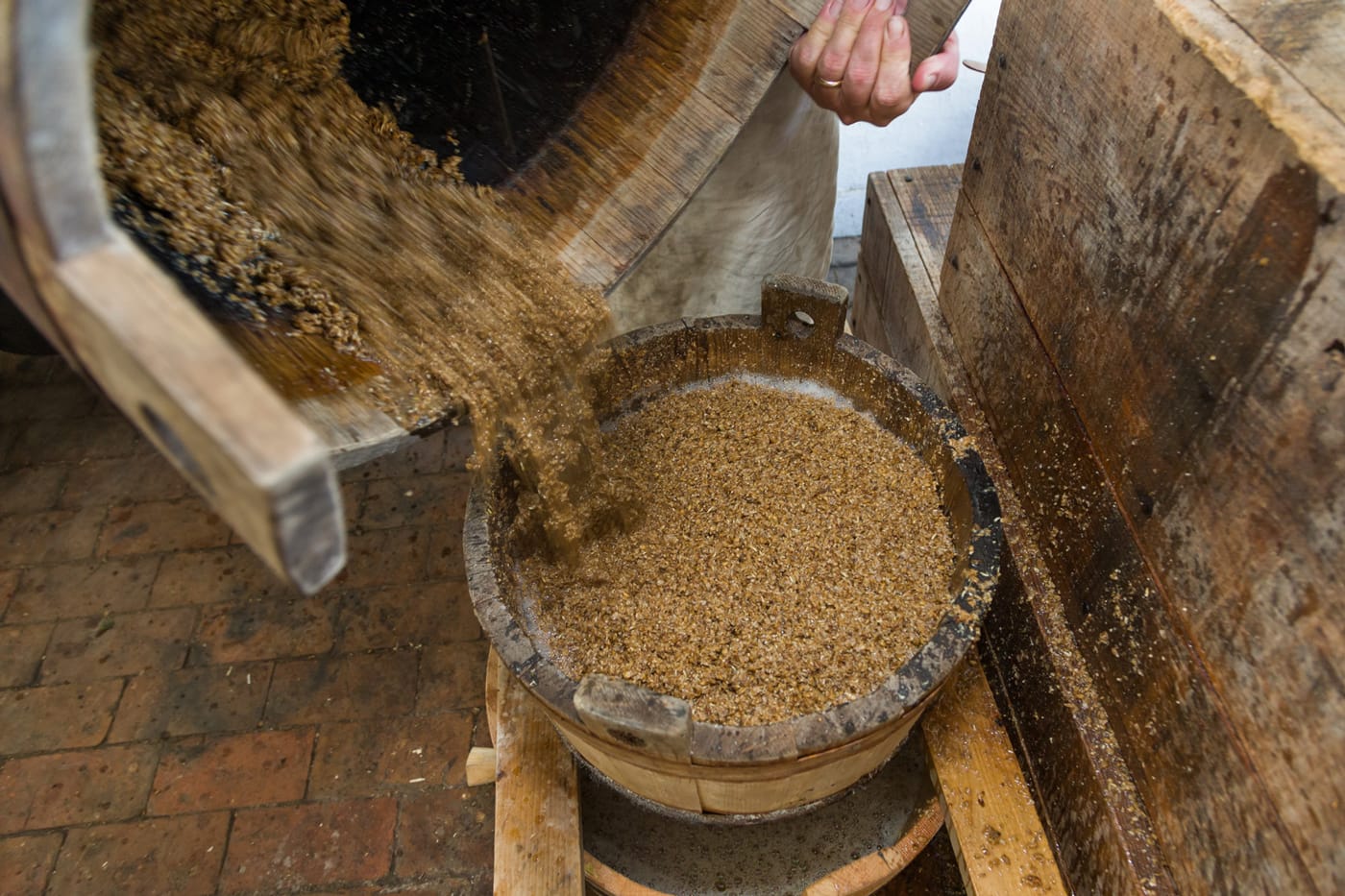
The process can be repeated up to three times and each batch can be boiled separately to create three batches of different strength beers, or as professional English brewers did, they can be combined and boiled as one beer.
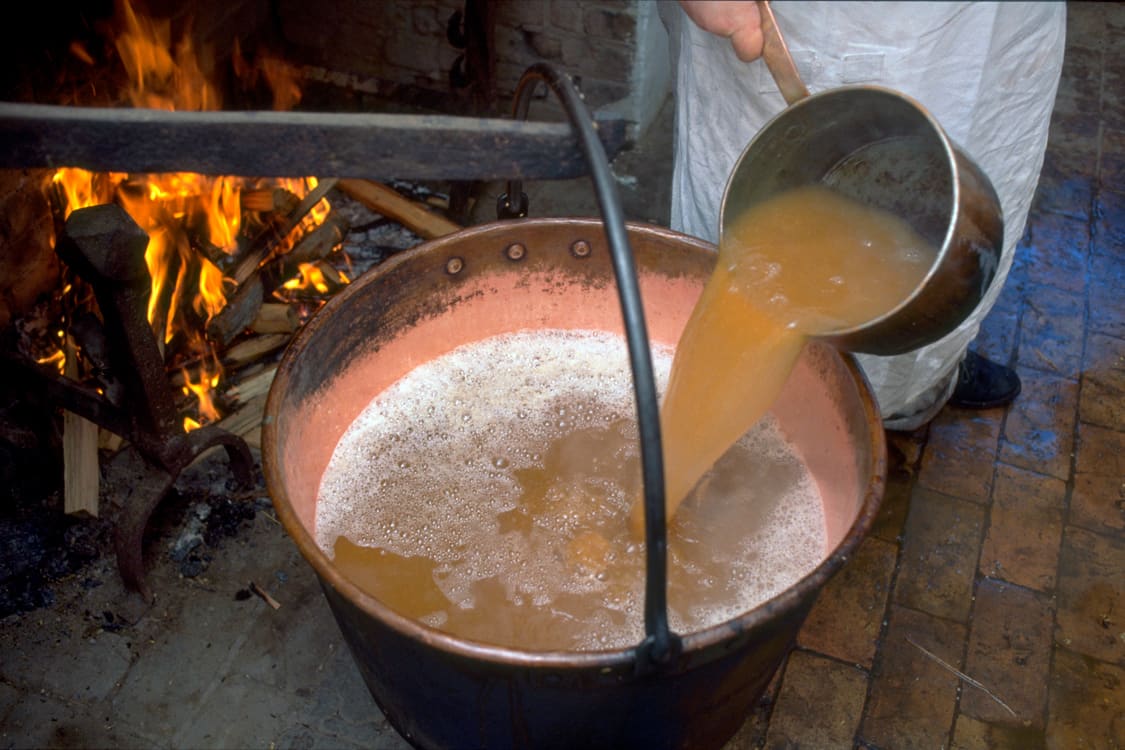
This greatly reduces the time the brewer spends and is necessary for us to fit the program into a modern museum setting. After all the mash is separated, the hops are added, and the liquid, now called wort, is brought to a boil.
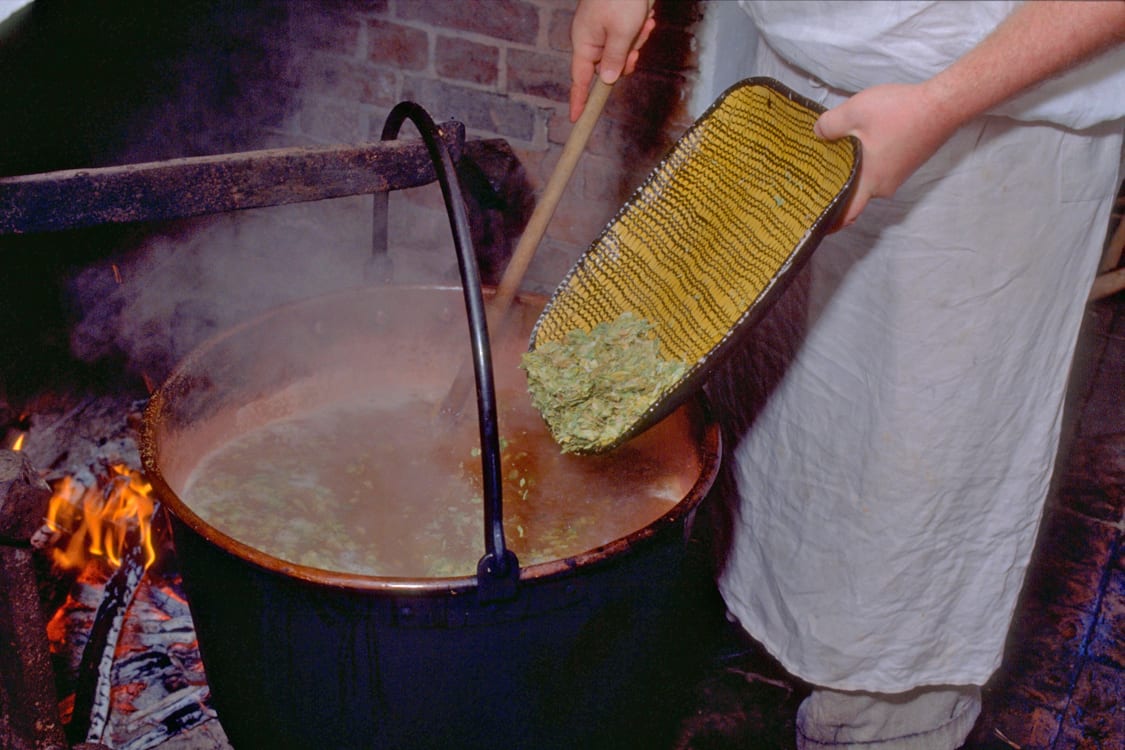
After boiling for over an hour the hops are removed, and the liquid is cooled so the yeast can be added to begin fermentation.
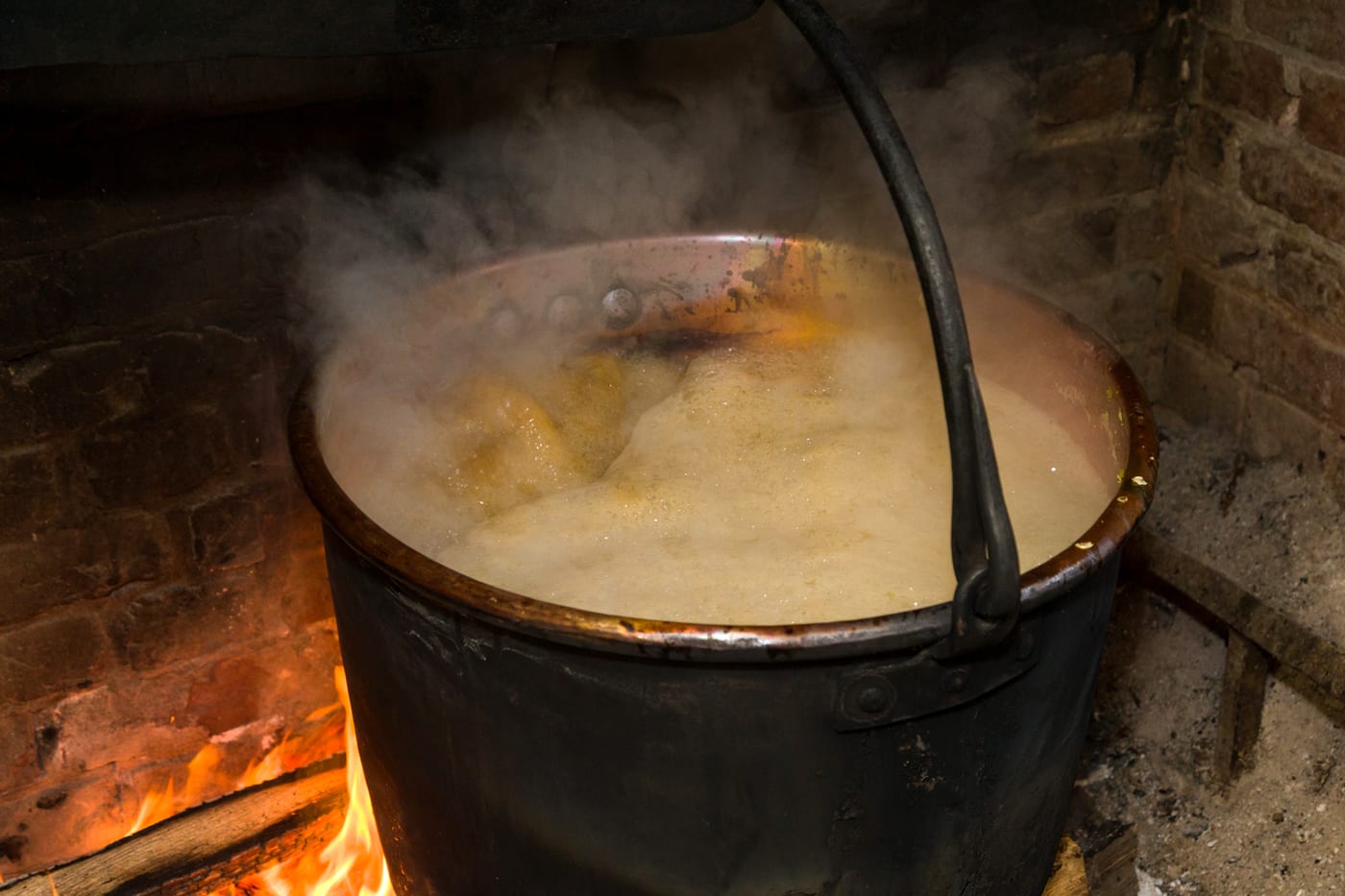
All through this process it was the perfect opportunity to exchange information and interpretive style to educate both our guests and ourselves. I speak for the entire foodways staff in saying “thank you” to Marc for spending the day brewing with us and the week in Williamsburg educating guests and staff alike.
Frank Clark is the master of historic foodways and has worked for Colonial Williamsburg for 33 years. One of his favorite things thing about working with historic foodways is discovering delicious recipes of the past and brewing historic beers. When not at work Frank loves playing and listening to music, traveling and spending time with his wife and cat.
